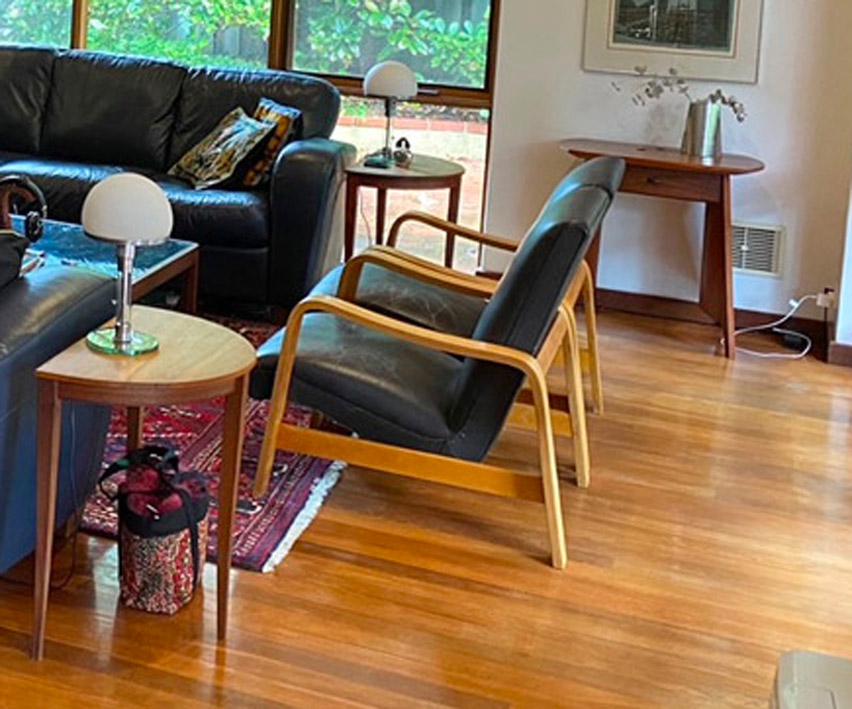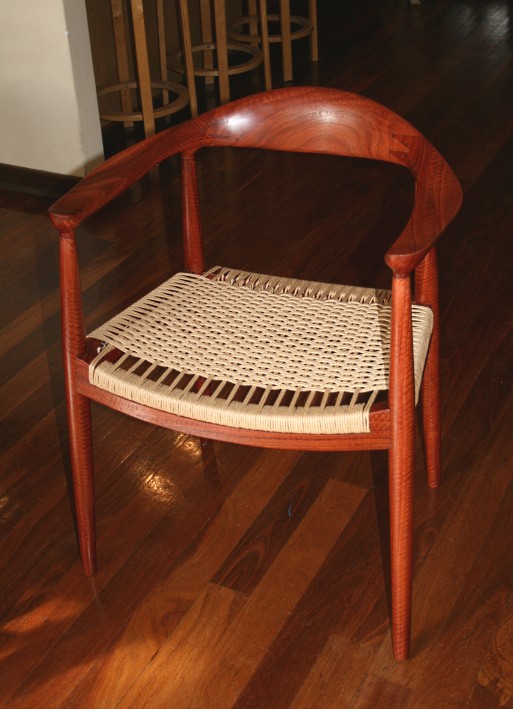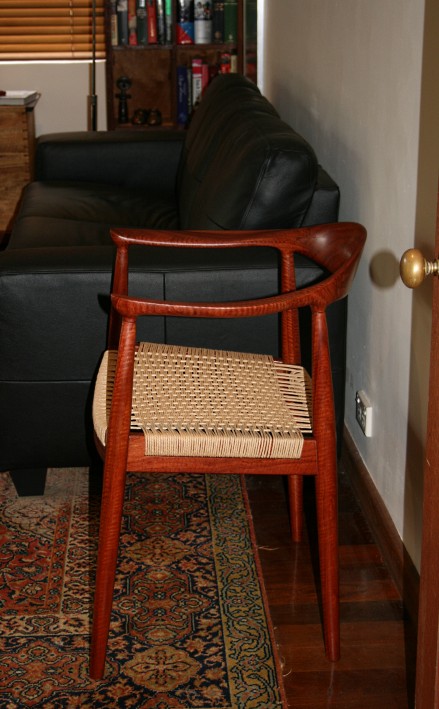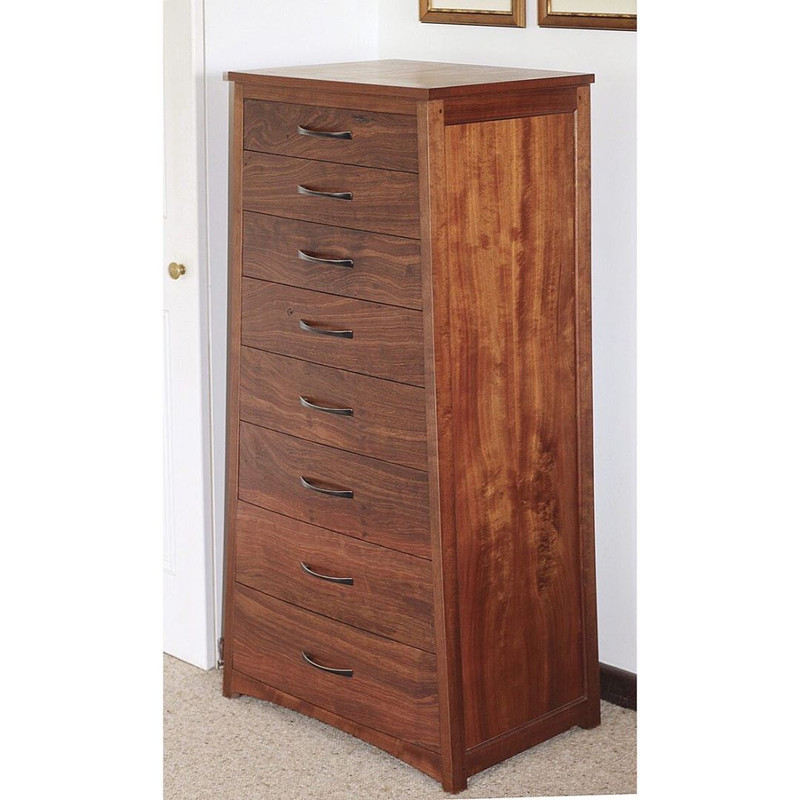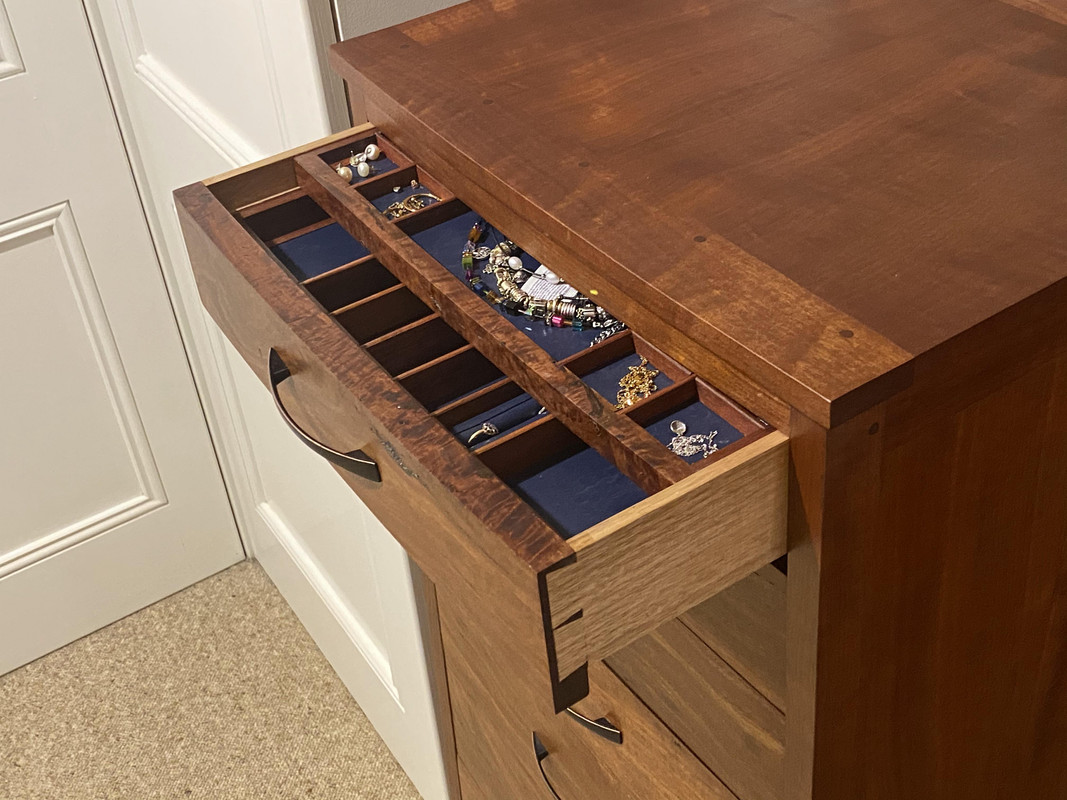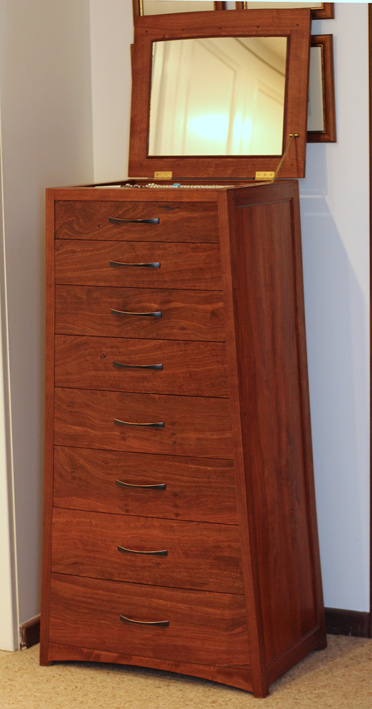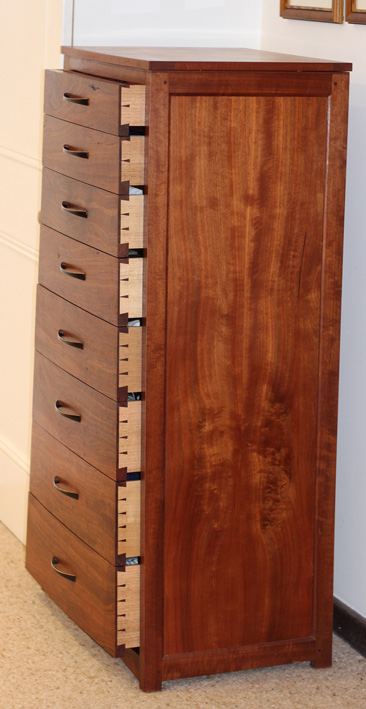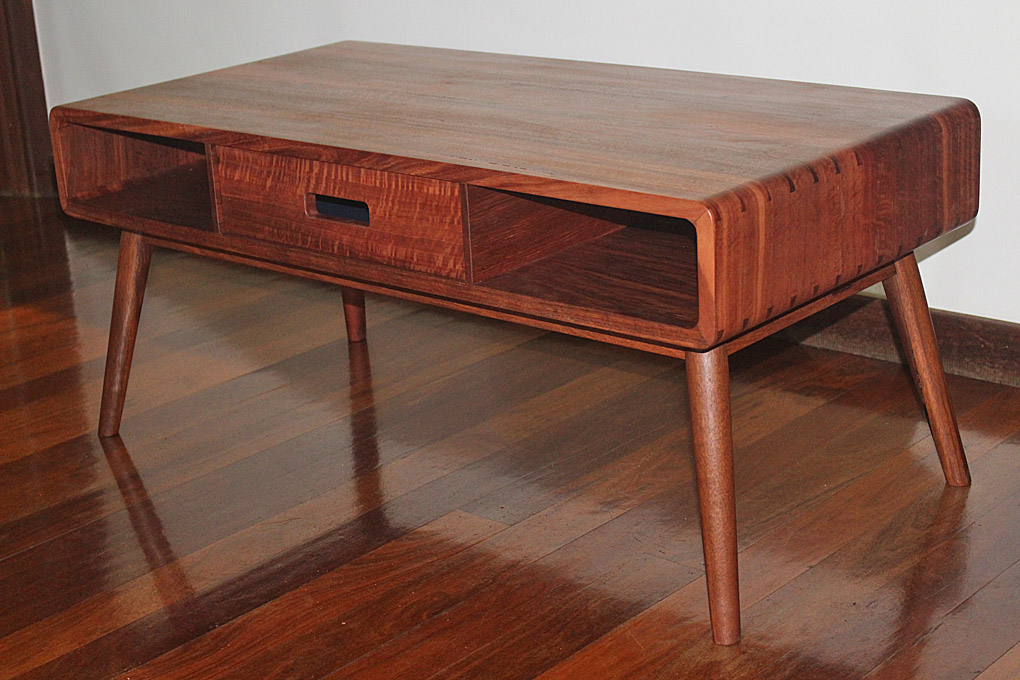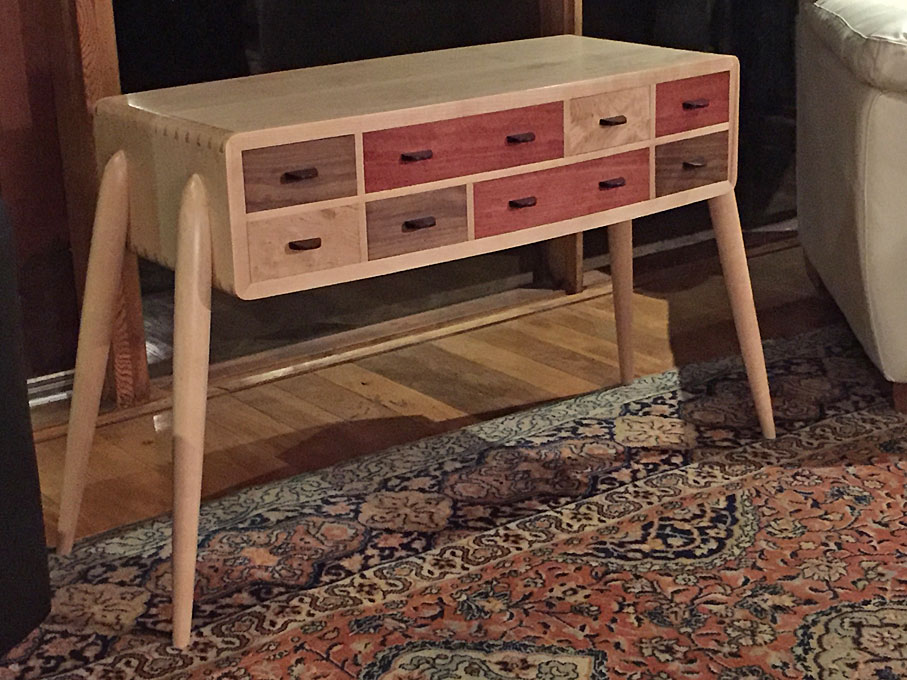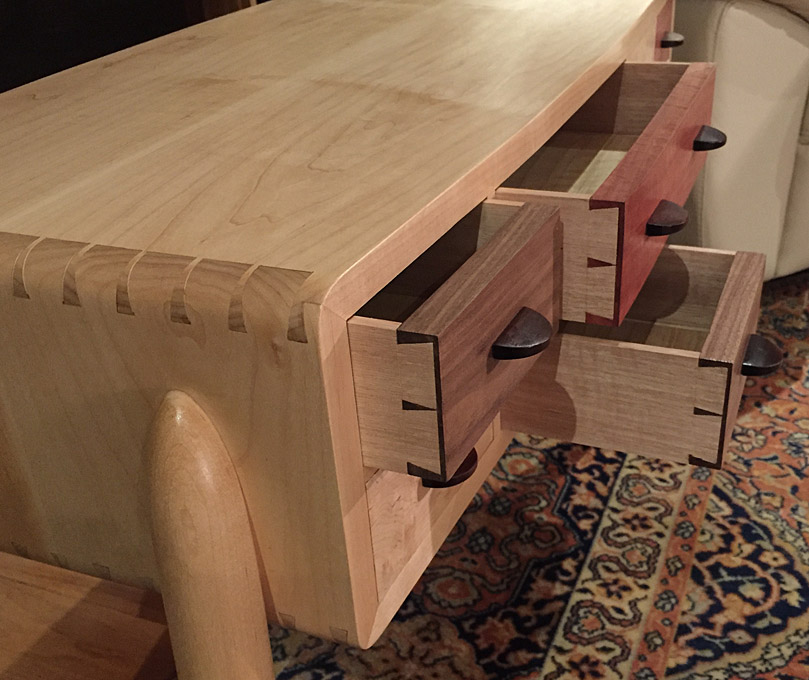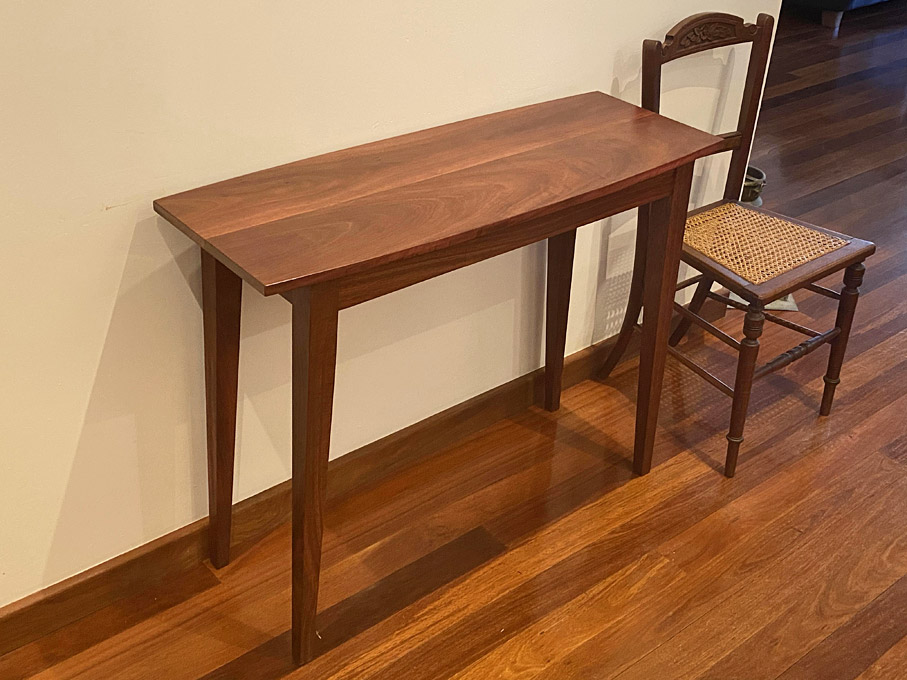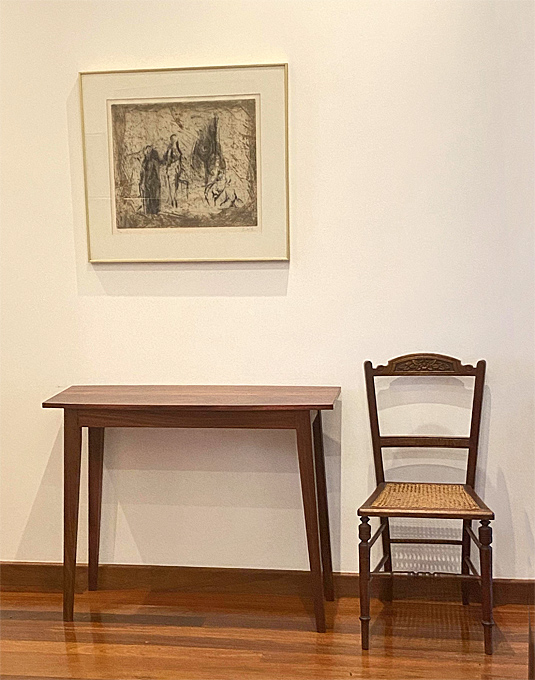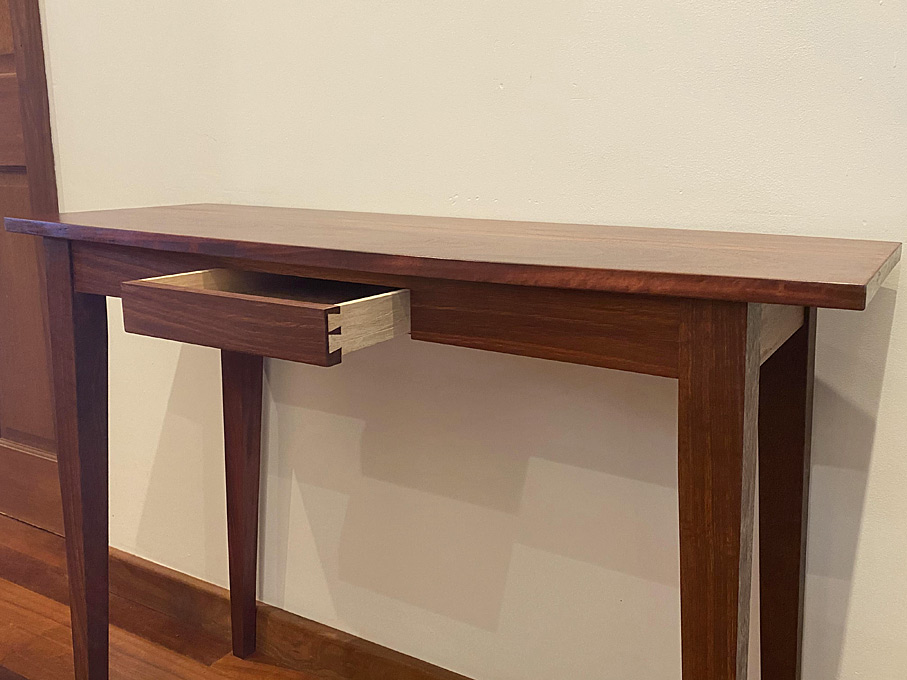In another thread on this forum conserning youtubers the discussion started to touch on the subject of good design.
Inspirered by this I thought I should start the christmas season with a few thoughts on this subject and maybe start a discussion on a few pieces.
By profession and training I work with design. I work as an urban planner and have gone through architecture school and my Alma Mater focused on two things, the artistic process and sustainability. What I learned is that design is not a dark art. Drawing is not a talent. They are both skills that can be trained and learned. They are similar to reading and writing. Most people can learn to read and write, even though not everyone will become a Hemingway, Lagerlöf or Adiche. Most people can learn to design, even though not everyone will become the next Aalto, Mackintosh or Perriand.
One thing I find interesting is that a lot of people are interested in learning how to do perfect joinery rather than learning to make pieces that are well designed and are more impressed by perfect dovetails than great design. There is nothing wrong with this, this is a hobby for most people and whatever makes you happy is ofcourse OK. The thing is though, that I would rather make something with an overall pleasing and well designed shape/proportions and a few dovetails with gaps (or whichever joint) than something that is perfect in details but with bad proportions.
In the other thread there was a link, and short discussion about a maker who seems extremely skilled. Everything seems to be carried out with perfect precision, but it leaves me cold. I found the designs overly busy with too many elements for my taste.
One of Swedens greatest and influential artists and designers the last 200 years was Karin Larsson. She is mostly famous for her textiles which she carried out herself. They are absolutely brilliant. However, people more knowledgeable about textile art have pointed out that she was not always that concerned about that the parts of a weave that are not seen should be perfect. The rocking chair on top left image is a favourite of mine. It was designed and made in 1906. It is modernism years before modernism! It is chunky,blocky, stout but still elegant and very well proportioned. Playful and designed with a sense of humour.



The next design I bring up as good example of design is the sofa we have at home, Träsoffa ("wood sofa") by Nirvan Richter. This is not a unique piece, it is a modern design classic that have been manufactured by the company Norrgavel since 1993. It is in many ways a post modern take on 18th and 19th century Gustavian era furniture as well as designs by Carl Malmsten. It is very much grounded in tradition and at the same time very much a design of the 1990's.


As a continuation on the design by Richter I would like to show another Swedish classic, by Carl Malmsten. Another wooden sofa, and a stool from the same product line, Visingsö. Like all of Malmstens work, the lines and the proportions are exquisite. This is not advanced woodworking with complicated joints, showy veeneer or expensive wood. This is simple but not simplistic pine furniture that is very beautiful.


So, what are your thoughts about the pieces above? What do you like in a design, and what designs inspire you?
Inspirered by this I thought I should start the christmas season with a few thoughts on this subject and maybe start a discussion on a few pieces.
By profession and training I work with design. I work as an urban planner and have gone through architecture school and my Alma Mater focused on two things, the artistic process and sustainability. What I learned is that design is not a dark art. Drawing is not a talent. They are both skills that can be trained and learned. They are similar to reading and writing. Most people can learn to read and write, even though not everyone will become a Hemingway, Lagerlöf or Adiche. Most people can learn to design, even though not everyone will become the next Aalto, Mackintosh or Perriand.
One thing I find interesting is that a lot of people are interested in learning how to do perfect joinery rather than learning to make pieces that are well designed and are more impressed by perfect dovetails than great design. There is nothing wrong with this, this is a hobby for most people and whatever makes you happy is ofcourse OK. The thing is though, that I would rather make something with an overall pleasing and well designed shape/proportions and a few dovetails with gaps (or whichever joint) than something that is perfect in details but with bad proportions.
In the other thread there was a link, and short discussion about a maker who seems extremely skilled. Everything seems to be carried out with perfect precision, but it leaves me cold. I found the designs overly busy with too many elements for my taste.
One of Swedens greatest and influential artists and designers the last 200 years was Karin Larsson. She is mostly famous for her textiles which she carried out herself. They are absolutely brilliant. However, people more knowledgeable about textile art have pointed out that she was not always that concerned about that the parts of a weave that are not seen should be perfect. The rocking chair on top left image is a favourite of mine. It was designed and made in 1906. It is modernism years before modernism! It is chunky,blocky, stout but still elegant and very well proportioned. Playful and designed with a sense of humour.



The next design I bring up as good example of design is the sofa we have at home, Träsoffa ("wood sofa") by Nirvan Richter. This is not a unique piece, it is a modern design classic that have been manufactured by the company Norrgavel since 1993. It is in many ways a post modern take on 18th and 19th century Gustavian era furniture as well as designs by Carl Malmsten. It is very much grounded in tradition and at the same time very much a design of the 1990's.


As a continuation on the design by Richter I would like to show another Swedish classic, by Carl Malmsten. Another wooden sofa, and a stool from the same product line, Visingsö. Like all of Malmstens work, the lines and the proportions are exquisite. This is not advanced woodworking with complicated joints, showy veeneer or expensive wood. This is simple but not simplistic pine furniture that is very beautiful.


So, what are your thoughts about the pieces above? What do you like in a design, and what designs inspire you?



